14-15 October 2019
About twenty miles north on the “Left Bank” of the Dordogne and Gironde Rivers, I learn my first lesson in French wines. It is pretty much “crickets” around here in mid-October. My first destination should not be a chateau but a tourism office.
Things are quiet in wine country, at least as far as tourism goes. Grapes are mostly harvested but there continues isolated late picking and lots of activity around the winery as the crushing and fermentation begins for 2019. The vines are just beginning to hint of their potential fall colors.
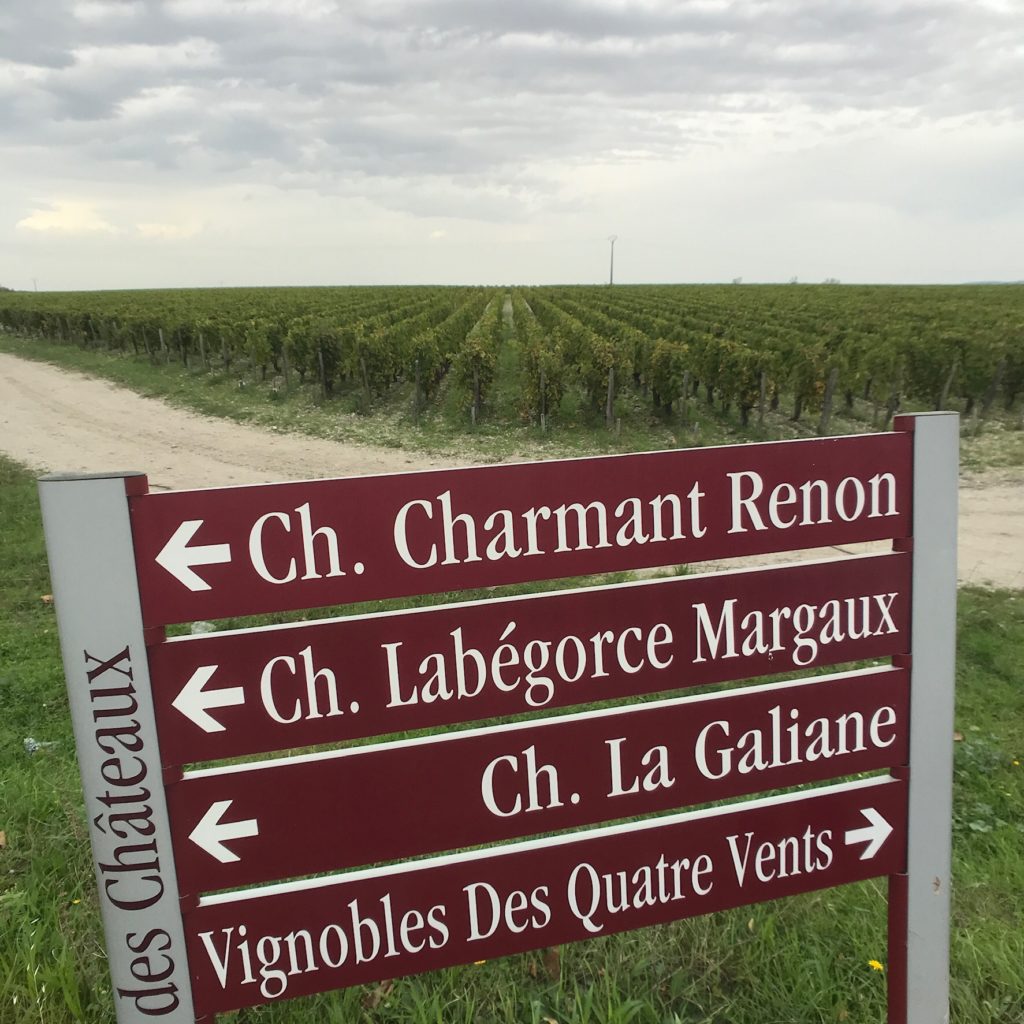
Red Bordeaux wines of this appellation around Margaux, a section of the Médoc appellation, are predominately a blend of Cabernet Sauvignon, Merlot, Malbec, Cabernet Franc and Petit Verdot grapes. Each of the wineries we hope to visit for tasting presents two labels, a Second and a First Wine. Each are a blend of Merlot and Cabernet Sauvignon with a small percent of Petit Verdot. The blend, and time of aging, makes a huge difference in taste.
A few crucial definitions then let’s just get on with tasting.
There is a “Right Bank” and a “Left Bank” of Bordeaux wines. The “Right Bank” is north of the Dordogne and Gironde Rivers and the “Left Bank” is south of the Garonne and Gironde rivers. The Left Bank vineyards are dominated by Cabernet Sauvignon, while the Right Bank focuses more on Merlot. This means the Cabernet-based Left Bank wines tend to be a bit more tannic, while the Merlot-based Right Bank wines show restrained tannins. Left Bank, except for the Graves region, produces reds while on the Right Bank I find whites and roses.
An appellation is a legally defined and protected geographical location used to identify where the wine grapes were grown. For example, no region can legally call their sparkling wine Champagne unless the grapes come from that appellation. An appellation can also restrict which and how many grape varieties may be grown and other factors of quality, basing decisions on soil, sun, and water conditions.
Second Wine is a term used to refer to a second label for each estate. Depending on the house winemaking style, individual plots of a vineyard may be selected, often those of the youngest vines, and fermented separately, made from cuvée (meaning tank or vat) with the best performing barrels being chosen for the house’s First Wine/Grand vin and the other barrels bottled under a separate label and sold for a lower price as a Second Wine. This Second Wine if often as enjoyable as the First.
First Wine, has the potential for longer aging and a blend, at least on the Left Bank, of three varieties, usually Merlot Cabernet Sauvignon and Petit Verdot. The “Château” appellation comes with the finer First Wine.
I don’t need to leave Bordeaux for wine tasting but the beautiful countryside for miles in all directions is chock-a-block with wineries. I may not be able to sample much, as I am driving, but I can buy and take back to the hotel. I live in a wonderful wine region of California and appreciate groomed vineyards, the tasting rooms, and the enjoyment of visiting individual family enterprises. And the Châteaus are stunning!
I can get all sorts of tasting tips, sniff tests, food pairing suggestions, decanting and serving recommendations in Bordeaux. I just want to sample and decide for myself what I like.
We drive about 20 miles north into the Médoc appellation and the village of Margaux. Today is the left bank of the Garonne River. The land lies between the Atlantic Ocean and the Gironde estuary and has the soil for raising the ideal grape for cabernets and merlots.
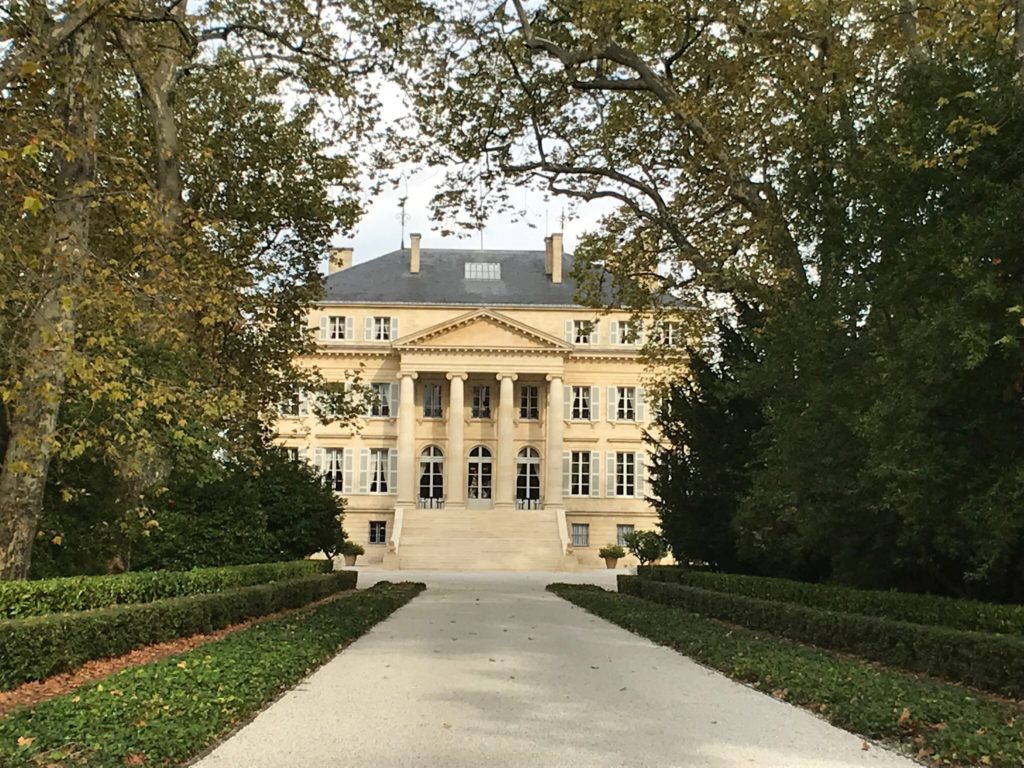
Château Margaux, the predominant house in Margaux appellation, is a beautiful winery. However, we quickly discover that the grape crush is on and there are no tours or wine tasting available.
Therefore, we head to the most important stop of the day –
Maison du vin du Tourisme in Margaux. The friendly and very helpful staff becomes the perfect stop. Here I learn about the region, it’s wines, it’s chateaus and availability of tours. From this information, I can plan which wineries will be open to visitors, where to get wine tasting, and have all questions answered.
Also, right next door is the wonderful Le Savoie Restaurant. I have learned to eat my main meal when restaurants are serving, usually a narrow window of time from 12-2. The meal and wine are excellent
Our first winery is a small family-run operation a couple miles north. Clos De Bigos in Soussans harvests just 5 acres of grapes. This is the family’s fourth generation of vintners. (The daughter-in-law has written a charming book for children about wine growing. On sale here, it is in English.) Their First and Second wines are a blend of Merlot, Cabernet Sauvignon and the Petit Verdot.
The Petit Verdot is a new variety for me. It is principally used in classic Bordeaux blends and ripens later than the other varieties in Bordeaux. The grape adds a bit of spice, tannin, color and robustness when used in small amounts, to the blend. I tasted wines with between 5-15% added. I particularly enjoyed the Merlot, Cabernet Sauvignon with 15% Petit Verdot blend.
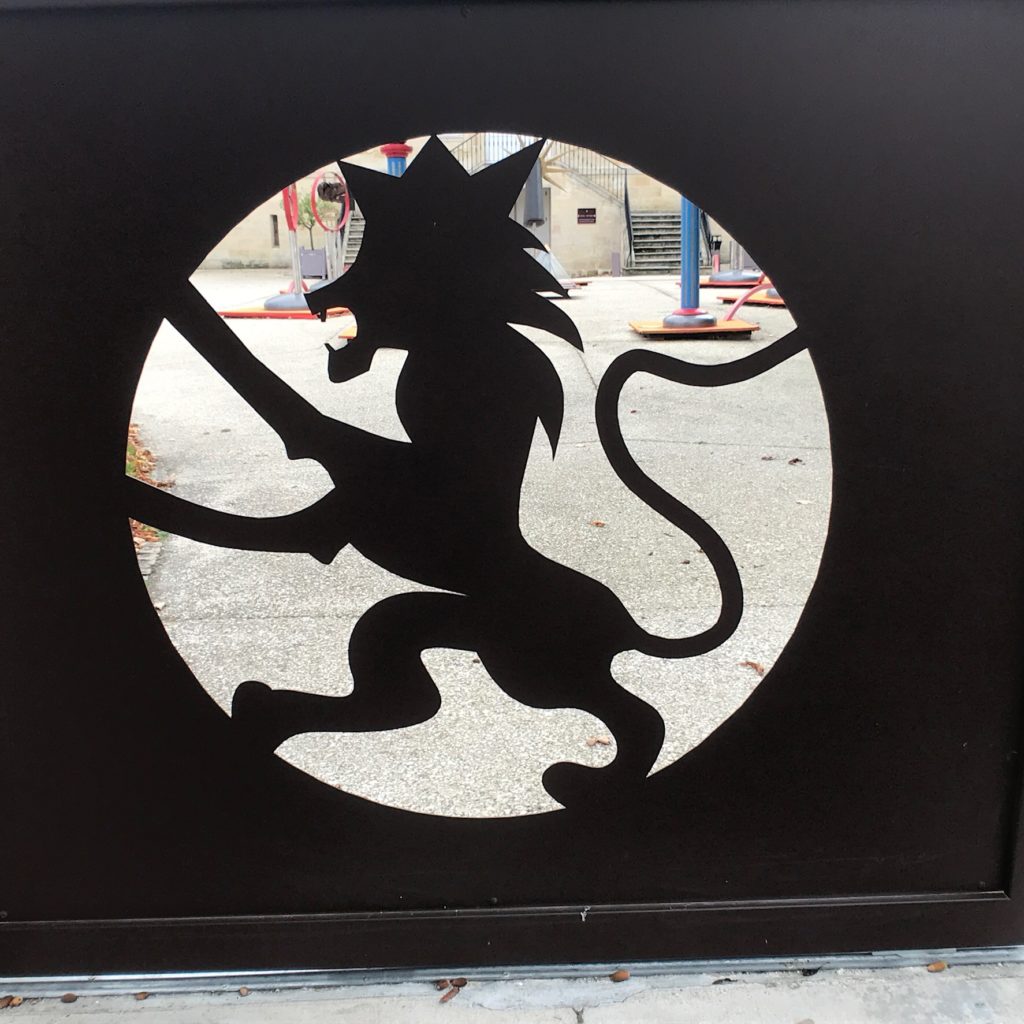
Château Lascombes, Margaux, uses the symbol of the lion at its beautiful winery. This is the historic region of Aquitaine and the country of Richard the Lionheart, son of Eleanor of Aquitaine and Henry II of England. Richard I was King of England and Duke of Normandy, Aquitaine and Gascony in 1189, the symbolic lion is a favored symbol in this area.
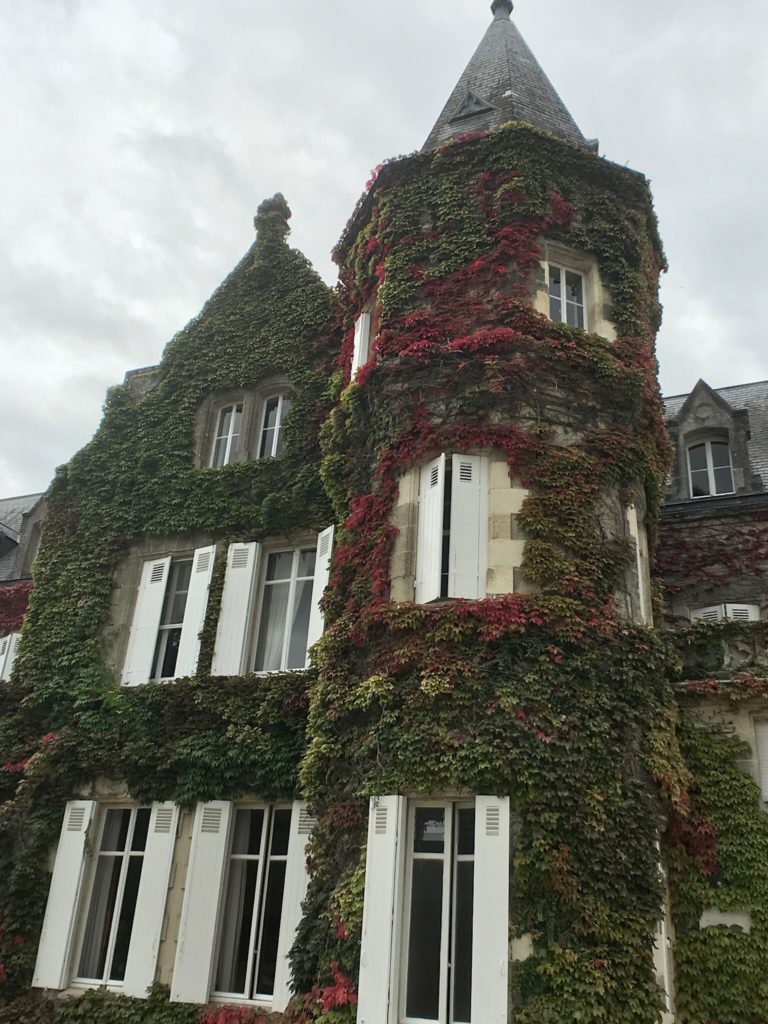
Château Lascombes is a fine example of the large, impressive vine-covered chateau. It harvests over 300 acres of grapes. The First and Second wines are very good. Only one tour was offered later in the day so we did not wait. We purchased the Second Wine, the 2016 Chevalier De Lascombes, a tasty blend of 50% Merlot, 50% Cabernet Sauvignon. This wine is named for the first owner of the vineyard, Knight Antoine de Lascombes, born 1625.
Château Marquis de Terme Tourisme, in Margaux, plied us with a taste of their First and Second wines, both excellent. The First Wine has added 15% Petit Verdot for more finesse and results in a robust and delicious red.
One day is not enough. For a second day of wine tasting, I drive to the Right Bank, about 20 miles east of Bordeaux. Our first stop is the small appellation of Vayres which is located in what is referred to as the Entre-duex-Mers or between two seas. The Maison du Vin des Grave de Vayres is centrally located and an excellent stop for learning about the wines of this region. The Syndicat des Graves de Vayres, no relation to “THE syndicate,” is a conglomerate of 30 vintners of Vayres. Here at the Maison, we are given an excellent explanation and sample a selection of 6 area wines from white to rose to excellent reds
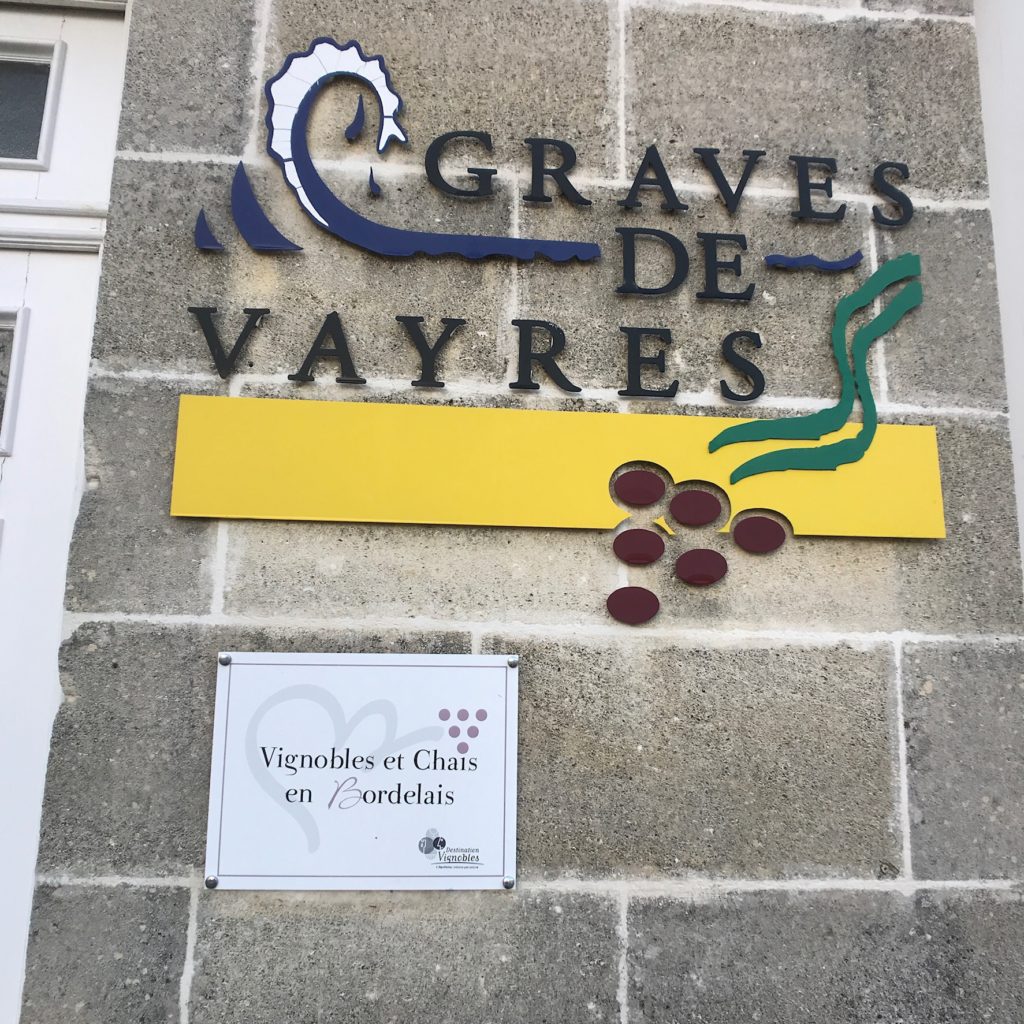
The Vayres appellation is unique because it is not the typical clay and limestone soil of the Right Bank but the soil is known for its “grave” or stone. The stones hold in the warmth of the sun and allow for production of whites, roses and reds.
After an opportunity to taste, we purchase a spirited but smooth Château Haut-Mongreat, a 2016 Graves De Vayres appellation. We note that the wine blend is not on the bottle and are told this is typical.
The French know by the appellation what kind of grape is produced and bottled. Regulations are strictly observed.
From here it is an easy few miles to the medieval village of Saint-Émilion. Legend says the city was founded in the 8th century by a fleeing monk seeking refuge in a cave. Since then, men have built an architecturally beautiful city and a world-famous wine industry. So much so that UNESCO has recognized this region as a World Heritage site. Saint-Émilion is superb and filled with wine shops, restaurants and boutique stores.
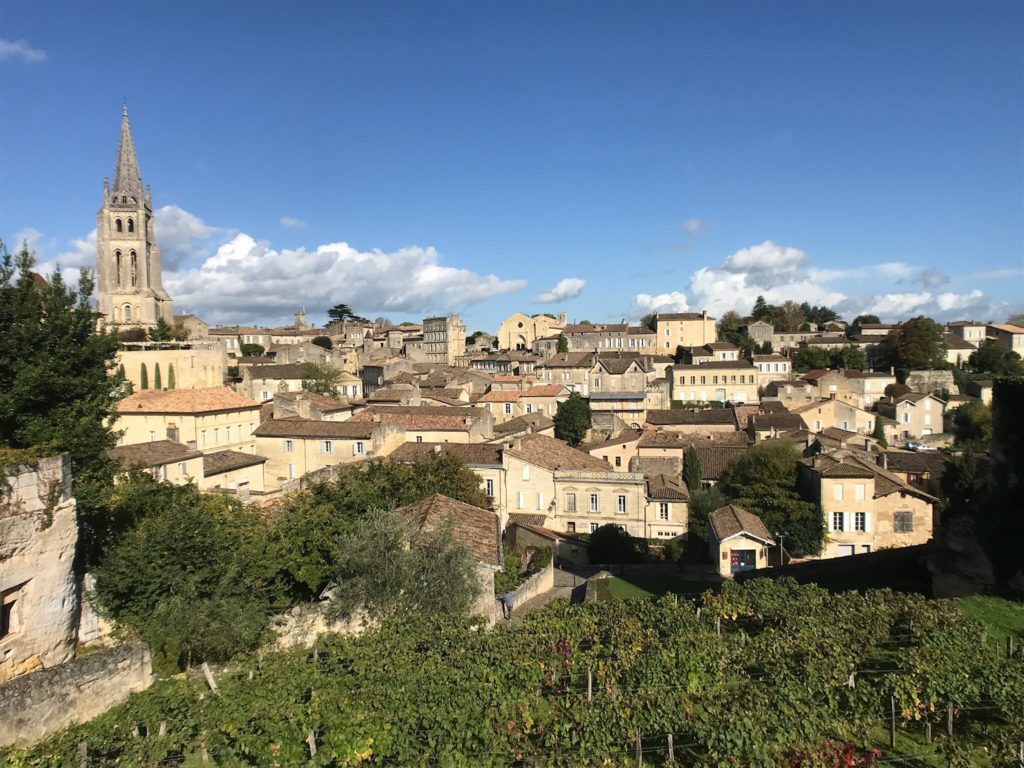
The amazing monolithic 12th century Church of Saint-Émilion was carved from limestone. Catacombs are even deeper underground. The best views of the village are from the attached 223-foot King’s Bell Tower or from the Chateau du Roy, a wonderful tower along the bastions.
There are historic bastions to walk, monuments to appreciate, parks and cafes. I love everything about this village.
We have chosen to visit Château wineries but this is easier said than done. Most chateaus are done harvesting and are beginning the fermentation process. Not all have tasting and tours are limited hours. Therefore it is easier to visit a central museum/tasting/seller.
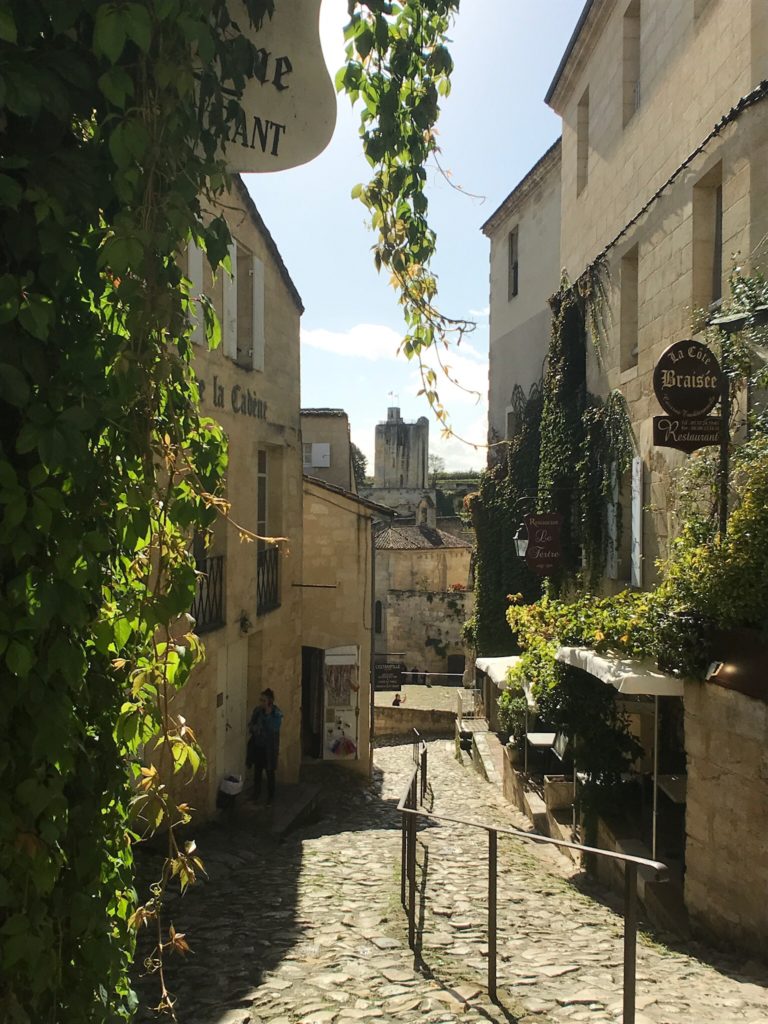
Saint-Émilion is a charming city for wandering. Known for its excellent Grand Cru wine, cafes abound with opportunities to taste a wide variety of bordeauxs and red blends. This is one of the most important red wine areas of Bordeaux. The region is small but mighty. And there doesn’t exist a poor cobblestone street.
0 Comments